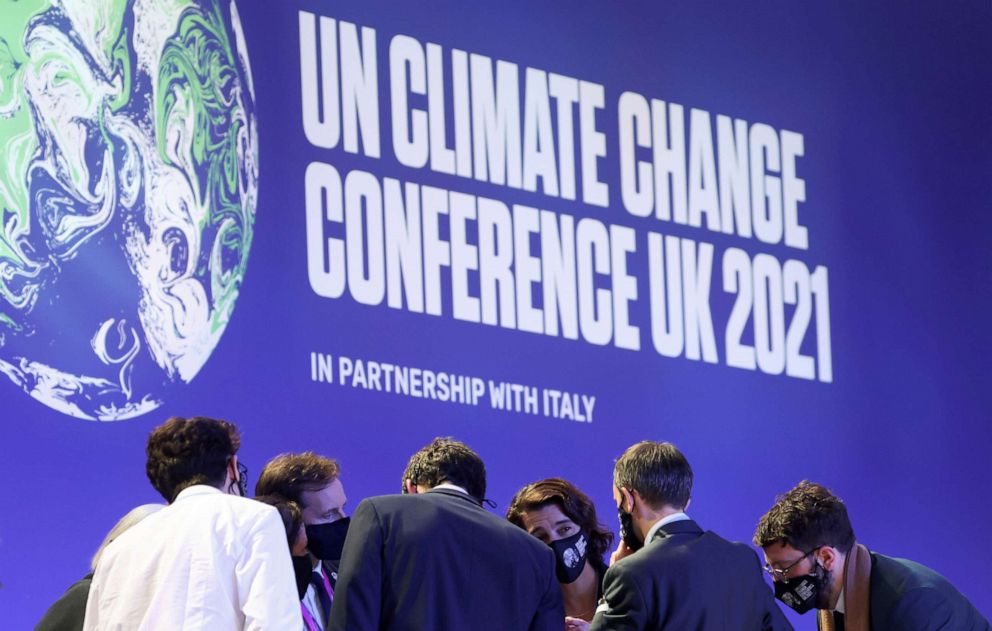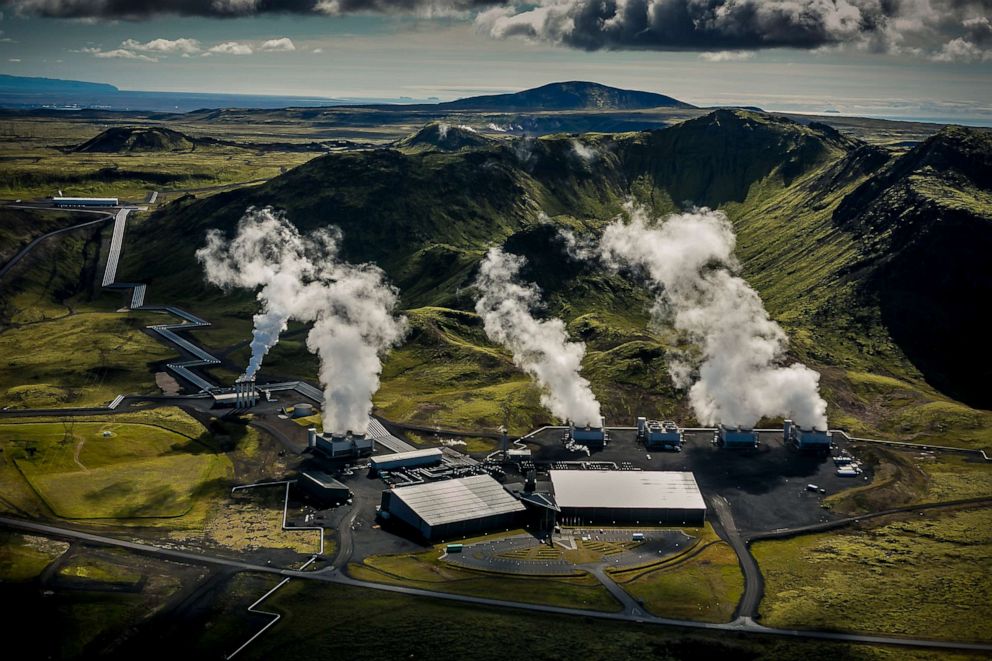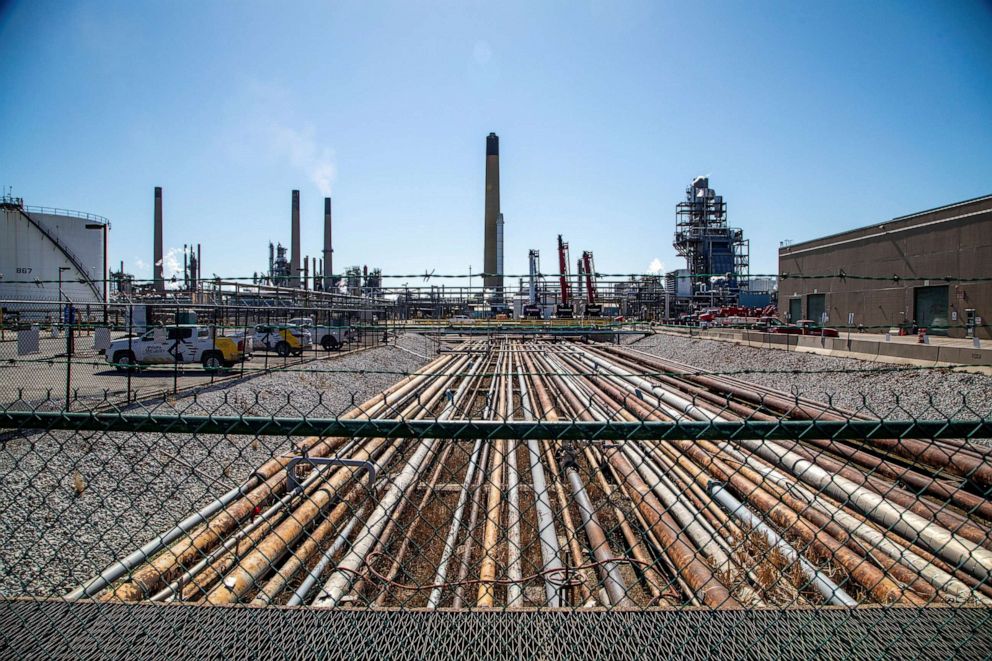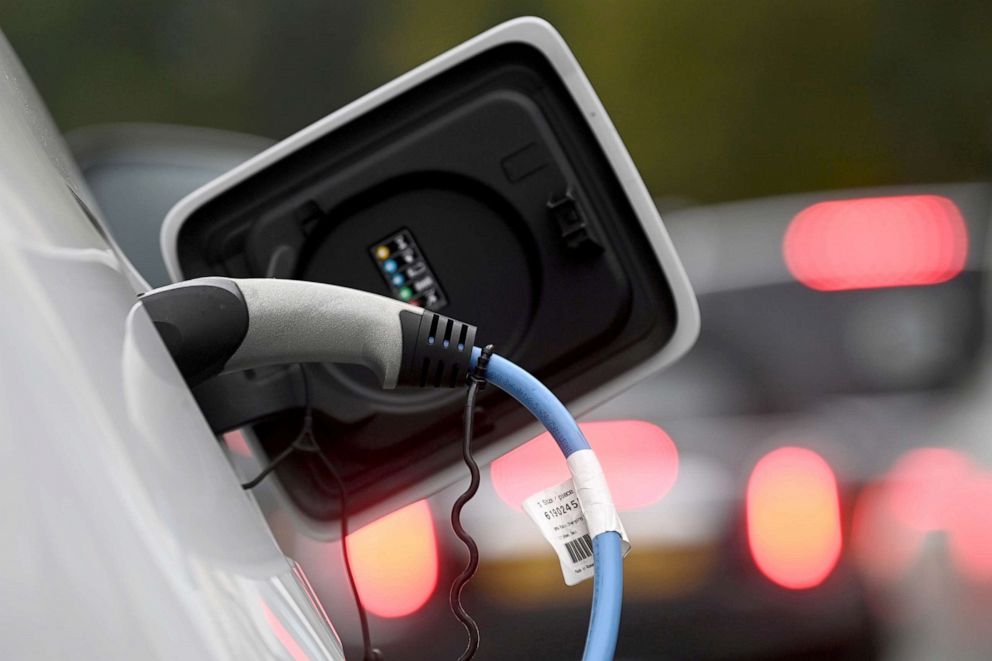Now that countries have made their climate pledges, how will they pay for them?
Adapting to sustainable existence will be expensive but worth it, experts say.
When the world's leaders arrived in Glasgow for COP26 earlier this month, they knew what needed to be done: keep global warming below 2 degrees Celsius at all costs.
The climate pledges were made, many more ambitious than ever before. But now that the dust has settled and the private jets have left Scotland, what comes next?
Determining where the money to pay for all of these new climate initiatives will come from will now be instrumental in the fight against climate change, experts told ABC News.
Funding initiatives to combat climate change is expected to cost about $50 trillion by 2050, according to a report published in 2019 by Morgan Stanely.
But trillions of dollars over the coming decades is a "drop in the bucket" compared to the challenges and potential damage the world faces when addressing climate change, and the money to pay for some of the necessary changes certainly exists, Kathy Baughman McLeod, former Bank of America global executive for environmental and social risk, told ABC News. McLeod attended COP26 through her current role as director of the Adrienne Arsht Rockefeller Foundation Resilience Center.
"The array of climate finance mechanisms, strategies and pathways is stunning," McLeod said.
This is where the experts say the money to fund the climate initiatives will come from:
The private sector
While government and philanthropy will have significant roles to play in funding, the majority will need to come from the finance sector, according to the experts.
There are already trillions of dollars in the private sector just "looking for a place for investments," McLeod said. The question is not whether the money exists, but which projects to invest in.
The energy sector presents one of the largest opportunities for investment because putting money into clean energy, such as solar and wind, "makes perfect sense," McLeod said, given that there is a major demand for sustainable energy infrastructure.
"Someone's going to pay for the power," she said.

Players in the finance industry are also paying attention as the as the industry focus shifts from extracting fossil fuels to clean energy and other ways to decarbonize every major economic sector, Jennifer Pryce, CEO of Calvert Impact Capital, a global nonprofit investment firm, told ABC News. According to the Mckinsey Institute, decarbonizing the four major sectors will cost $21 trillion by 2050 -- an opportunity to cash in on change.
"We look at transportation, and agriculture, and shipping and building materials, concrete, steel, and all of those have plans," she said. "That helps us figure out what is the best way to decarbonize those sectors."
The next step is figuring out how to decarbonize those sectors -- whether the technology exists and whether the technology is scalable, McLeod said. Once the return on investment is determined and interested investors are located, the process of adapting to more sustainable practices begins, she added.
One example is electric cars, where governments and companies are now tasked with scaling up existing technologies, presenting an opportunity to build the infrastructure of the future.

If private capital is invested effectively, it can create economic opportunities, more jobs and better quality of life, Pryce said, comparing the investment in climate infrastructure to the sudden emergence of modern communication.
"How we went from landline to cellular and digital...how we have all benefitted from that change," she said. "But, you know, it was not apparent at the time we were going from a landline to a digital backbone for communication, for technology."
The leaders of finance are now acting with urgency to tackle the climate challenge, because majority of the money is going to come from finance, Pryce said. The world will rely on finance experts, more so than slow-moving governments, to provide the capital for all of these climate initiatives.
"I think people are starting to understand to that carbon, like money, has a time value," she said, comparing the compounding effects of carbon to funds to investment interest. "It's not linear, taking the carbon out and reducing the impacts of climate change. We've got to do things now."
Government
Private capital will not succeed without government regulation to steer the capital "so that we can get to outcomes that really work for a better planet for important better outcomes for people," Pryce said.
The U.S. federal government is already spending trillions of dollars annually due to the effects climate change has on intensifying natural disasters, McLeod said.
Worsening extreme heat alone is expected to cost the U.S. $500 billion annually by 2050, according to a report published in August by the Atlantic Council, a Washington-based think tank.
"The trillion dollars, we're spending it on hurricanes, fires, floods, melting infrastructure, supply chain disruption," McLeod said. "It's a reference point that we have to get past, because what we're spending to protect ourselves or repair from the shocks and stressed of climate change is way beyond a trillion dollars."

President Joe Biden's $1.7 trillion infrastructure package contains $555 billion for climate and clean energy investments, and according to Democrats, measures have been put into place to ensure the legislation pays for itself without raising taxes.
The U.S. Federal Emergency Management Agency has assessed that for every dollar spent to protect from future climate disasters, about $10 is saved in rebuilding efforts, McLeod said.
"So it is the smartest investment we could contemplate," she said.

The federal government could also help to come up with significant funding to help developing countries to be able to transition to a decarbonized world, Jim Harmon, chairman of the World Resources Institute and chairman of the Egyptian-American Enterprise Fund, a firm that invests in private enterprises in Egypt that contribute to long-term, sustainable economic growth, told ABC News.
Enterprise funds, not for-profit, privately managed investment funds authorized by the U.S. Congress to promote private sector development in developing countries, could be the answer to funding climate initiatives abroad without putting too much of a burden on American taxpayers, Harmon said.
An estimated $10 billion in new enterprise funds authorized by the government to invest in low-carbon projects in developing countries, accompanied by a $10 billion match from the private sector, could help close the gap in U.S. climate financing, potentially generating trillions of dollars if enterprise funds were created on a large scale by a number of western countries in a region such as Central America, Harmon said. A similar program implemented in the 1990s to invest capital in the Soviet Union and central and eastern Europe, and another established in 2011 to invest capital in Egypt, were successful and could prove successful again, Harmon added.
"If every one of the major countries created enterprise funds and brought the private sector along with them, you could get to the goal," of enough funds for climate initiatives, Harmon said.
Philanthropy
"It'll take trillions of dollars to make a dent in climate change," Amazon founder Jeff Bezos said when asked by ABC News' Maggie Rulli about his own $10 billion pledge for climate change.
Bezos is not the only billionaire to donate significant sums to the climate fight. Elon Musk announced earlier this year that he would donate a $100 million prize for a competition to remove carbon from air and water. Bill Gates pledged $1.5 billion for climate change as long as long as the sweeping infrastructure bill was passed. Former New York City Mayor Michael Bloomberg has promised $500 million, Stewart and Lynda Resnick $750 million and Laurene Powell Jobs $3.5 billion.
The United Nations Environment Programme 2020 Emissions Gap Report found that the richest 1% of the world's population is responsible for 15% of emissions due to their extensive investments fossil fuels and high-carbon life, so the ultra-wealthy bears the "greatest responsibility" in climate change initiatives, according to the report.

Historically, philanthropies have allocated "relatively small sums" to address climate change, but it is now time for philanthropy to "step up" in the fight against climate change, according to McKinsey and Company's Sustainability Practice and Philanthropy service line.
In 2020, U.S.-based grant makers disbursed nearly $64 billion, but just $320 million of those funds went directly toward mitigating global warming, according to the report.
In addition, just 1.4% of U.S. philanthropic grant funding went to climate change in 2020, compared to 21.4% to health, 15.6% to public safety and 11.6% to community and economic development, according to the report.
While much of the capital to fight climate change will come from companies, governments and investors, philanthropies can also play a "vital role" by targeting the locations, industries and solutions that need the most support, according to the report.
"Simply putting more money into climate solutions won’t be enough," the report states.

It will be important to invest funds equitably, experts say
World leaders and those in the finance and philanthropy industries need to ensure the funds are distributed as equitably as possible, Pryce said.
As climate change is addressed, it is imperative that no one is left behind, "whether that's people in our own country...or developing and emerging markets around the globe," she said.
G20 countries will also have to consider practices such as blended finance and social safety nets when it comes to rebuilding efforts for the escalated natural disasters that are already impacting developing regions, McLeod said.
"Bangladesh, Sierra Leone, lots of parts of Latin America, when communities are obliterated by storms, floods, heatwaves, who pays for that?" McLeod asked. "And society pays for that."
However, more and more, solutions will need to be localized, McLeod said. Not every solution will work for every community, and it's not enough to wait on the federal government to pass sweeping legislations, she added.




